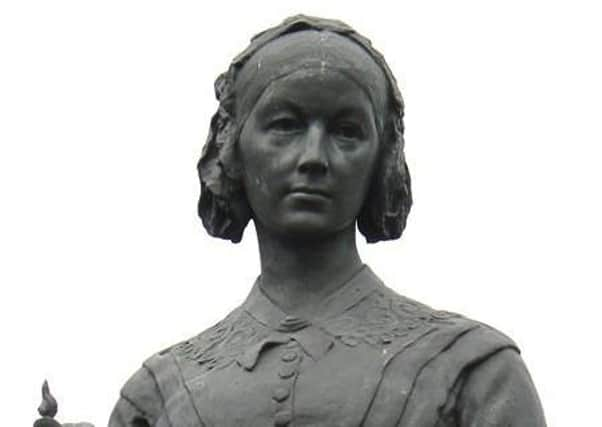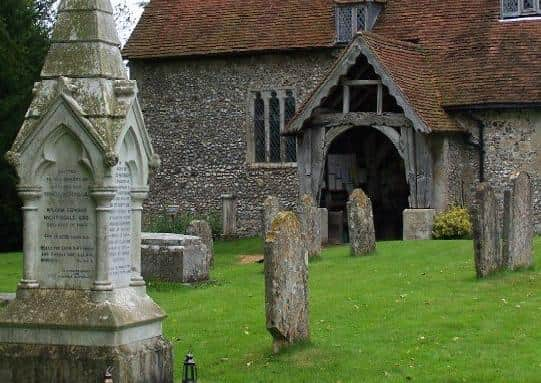Florence Nightingale: Lady with the lamp who revolutionised nursing


If Queen Victoria is regarded as the most famous and iconic British woman of the 19th century, Florence Nightingale must come a very close second (and the monarch held Miss Nightingale in the very highest esteem, admiring her capacity to do so much good in the world).
Florence Nightingale was born in Florence, hence her Christian name, into a cultured English upper-class and wealthy land-owning family on May 12 1820.
Advertisement
Hide AdAdvertisement
Hide AdHer father believed women should be educated, and as a result Florence had an extremely rigorous education in the classics and achieved fluency in several modern European languages. She also studied philosophy, history and, unusually for a girl in that era, mathematics. In addition, she developed a well-informed interest in mysticism, Schopenhauer and Biblical criticism.


However, she was simultaneously expected to acquiesce in the role ascribed to an early Victorian woman from a privileged background: marriage and motherhood.
In February 1837 – not long before her 17th birthday – she felt a call from God to become a nurse. She explained: ‘God spoke to me and called me to His service.’ Her parents were horrified at the prospect because in those days nursing was regarded as more akin to domestic service than a vocation or a respectable profession. When she was 24 her father finally relented and allowed her to become a nurse. She trained in Paris and at Kaiserwerth-am-Rhein, developing a determination to improve medical services and hospital conditions in the UK.
In terms of her great campaigning zeal, it is worth noting that Florence’s maternal grandfather was William Smith, the Whig MP for Norwich, a close friend of William Wilberforce and a fellow abolitionist. Although a member of the so-called ‘Clapham sect’, unlike most members Smith was a Unitarian rather than an Anglican evangelical.
Advertisement
Hide AdAdvertisement
Hide AdNightingale rose to prominence during the Crimean War (1853-6). Reports began to filter back home about the wretched condition of the wounded at the four British military hospitals at Scutari (in the Asian part of Istanbul, then Constantinople). Towards the end of 1854 she persuaded Sidney Herbert, who had been a brilliant protégé of Sir Robert Peel and was secretary of war (1845-6, 1852-5 and 1859-61), to send her (with 38 nurses) to Scutari to care for the wounded. Her missionary zeal and ruthless efficiency enabled her to transform the cleanliness and sanitation of the hospitals. Within a few months the mortality rate in British military hospitals fell from 42% to 2.2%.
The legend of ‘the Lady of Lamp’ was born in February 1855, when the Illustrated London News published a picture of a woman gliding through a hospital ward of stricken soldiers, holding a lamp. The picture, taken from an artist’s engraving and based on reports of Nightingale’s work at Scutari, was reproduced in The Times. Soldiers, it was said, kissed her shadow as ‘the Lady of Lamp’ passed. This striking image inspired one of Henry Longfellow’s poems.
In 1856 she returned to England, her health broken. Queen Victoria and Prince Albert invited her to Balmoral and Albert gave her a jewel he had designed for her. She became a key advisor to Sidney Herbert but some have accused her of hastening his death in 1861 because of the intense pressure her ambitious programme of reform put him under.
In 1860, with the assistance of £45,000 raised by public subscription, she established the Nightingale Training School for nurses at St Thomas’ Hospital in London. This school became a model for the training of nurses.
Advertisement
Hide AdAdvertisement
Hide AdWithin 20 years of its foundation there were trained nurses in most large British hospitals. In 1860 she also published ‘Notes on Nursing’, which became a bestseller. Its philosophy – cleanliness, warmth, fresh air and a good diet figure prominently – remains influential even today.
Nightingale was also a highly skilled statistician. Under her father’s guidance she excelled at mathematics. She was a pioneer in the visual presentation of statistical information through graphs, pie charts and what is sometimes called the ‘Nightingale rose diagram’.
She deployed these to great effect with politicians and civil servants who would have been unwilling to read or could not readily absorb statistical reports. In 1859 Nightingale was elected the first female member of the Royal Statistical Society.
She also possessed serious political and lobbying skills. She claimed, probably quite truthfully, that she had ‘more political power than if I had been a borough returning two MPs’.
Advertisement
Hide AdAdvertisement
Hide AdHer extensive influence extended to the armed forces, public health, housing and poverty. She remodeled midwifery training, revolutionised hospital design, contributed to the reform of workhouses, and raised awareness of the importance of sanitation in India (which she never actually visited).
In 1907 she became the first woman to be awarded the Order of Merit, an order instituted by King Edward VII, recognising distinguished service in the armed forces, science, art, literature, or for the promotion of culture. On August 13 1910, aged 90, she died peacefully in her sleep at her London home in Park Lane.
The offer of burial in Westminster Abbey was declined by relatives. Instead she was buried close to her parents in the graveyard at St Margaret Church in East Wellow, Hampshire. Her coffin was borne to the grave by sergeants drawn from the then four regiments of Guards.
On account of her Christian commitment, Florence Nightingale has an official commemorative day in the Anglican calendar, August 13, the day on which she died. The Anglican Communion regards her as an ‘exemplary Christian’.
Advertisement
Hide AdAdvertisement
Hide AdIn 2010 – on the centenary of her death – Florence Nightingale became the first commoner to have a chapel in Westminster Abbey named after her. The Florence Nightingale Trust had asked the abbey authorities if an icon of the nurse could be placed in the abbey. The abbey responded by announcing that the Nurses’ Chapel, which is dedicated to the memory of the 3,000 nurses from the UK and the Commonwealth who died in the Second World War, would be renamed the Nightingale Chapel.